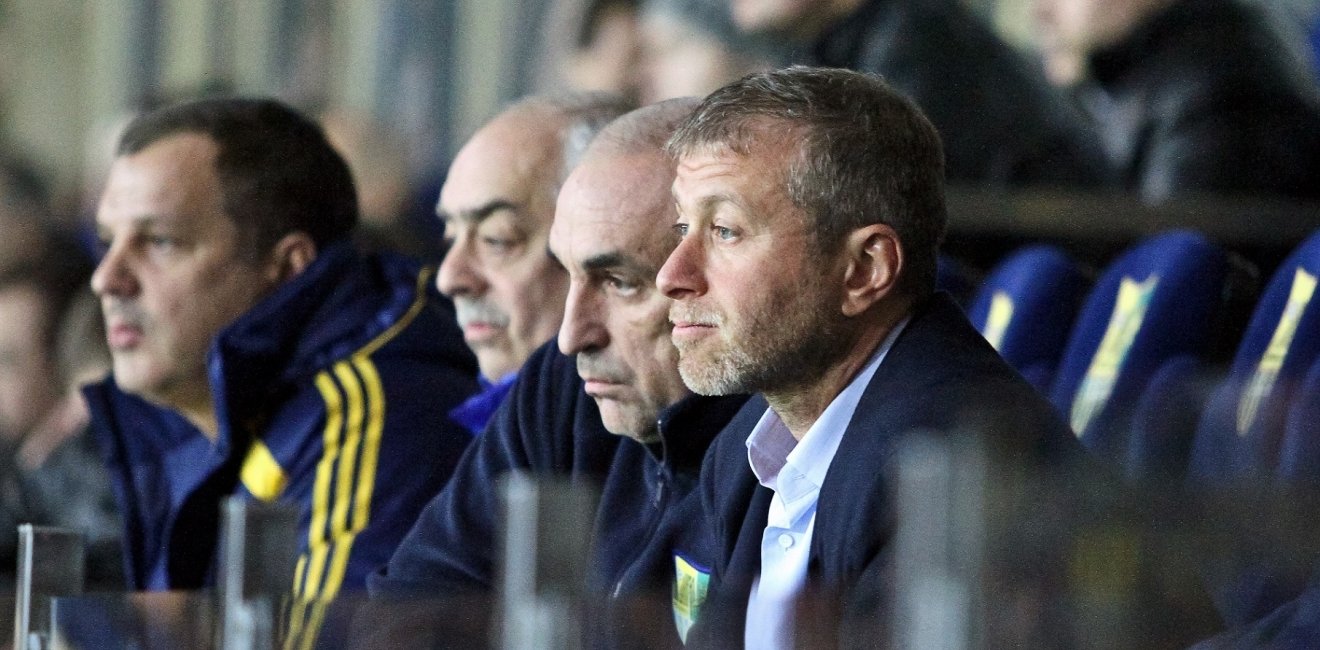
A blog of the Kennan Institute
BY KIRILL ROGOV
A clear understanding of why and how Russia’s monstrous war of aggression against Ukraine, a war destructive for both countries, became possible will require much time and effort. So far, the focus of immediate commentary has invariably been on President Putin, as the outbreak of war is perceived as his personal decision. However, reasoning along the lines of “we are all the hostages of one man’s insanity” is more likely to produce a fictitious answer rather than a genuine one.
Even if a decision of such magnitude and unimaginable consequences for the nation and its economy was indeed made by a narrow circle of people mostly unknown to us, it speaks volumes about the state of Russia’s government, national institutions, and society. Of course, Russia of the 2020s is an authoritarian country whose citizens have little sway over their government. But why have national elites—those who have managed to concentrate wealth and power to distribute resources, who should have been interested in preserving the status quo and therefore would be expected to play a stabilizing role—not been able to set up a system of checks and balances to limit the possibility of such destructive decisions?
Old Elites Give Up Ground and Go West
Taking a long view of the history of the post-Soviet elites and their relations with the Kremlin, we can distinguish several stages in this rapport. In the second half of the 1990s, Russia was developing a system of competitive oligarchy, quite common in many transitional and post-Soviet countries. Against a background of weak law enforcement, dysfunctional institutions, and docile political parties, oligarchic groups quickly accumulated property and capital and bought up the media, politicians, and the bureaucracy, resulting in a massive state capture.
At the same time, the presence of a number of oligarchic groups allowed some political plurality, which, however, failed to transform into the institutional pluralism needed for a mature democracy. It was not just Russia. Other post-Soviet countries, such as Ukraine, Armenia, Georgia, and Moldova, saw similar developments. A botched democratic transition undermined reforms and led to extensive corruption, but it did not significantly impede economic growth, global integration, or social dynamism.
In the early 2000s, a new and popular president, Vladimir Putin, replaced the old and unpopular Yeltsin. The new man promised to “equal distance” oligarchs from the state and build a “vertical of power.” What he actually accomplished was to create a pyramid of patron-client relations or a system of patronal politics, as the political scientist Henry Hale describes this phenomenon.
The new pyramid of patronal relationships with Putin at the top playing the arbiter of last resort included several elite contingents, both old and new. The extant “senior” oligarchic groups—those led by Mikhail Fridman, Roman Abramovich, and Oleg Deripaska, among others—gave up driving the country’s domestic politics and took up the strategy of “two pockets.” They would make money in Russia but use the jurisdictions and institutions of the West to offshore and invest their capital.
This approach allowed them to skip the goal of creating any guarantees for property protection in mainland Russia (a description of this elite strategy can be found in Maxim Trudolyubov’s book The Tragedy of Property). This system also helped the old elites avoid conflicts with Putin’s emerging new elites, that is, people informed by their personal connections to Putin, whether they have a background of serving in the Soviet intelligence and security agencies, or just the “strongman” mentality associated with the security forces.
The oil tycoon Mikhail Khodorkovsky was an exception. He got into politics, clashed with Putin’s cronies, was defeated, spent ten years in prison, and has lived in exile ever since. Other old oligarchs’ strategy of avoiding politics may have looked egotistical but, up until recently, proved more pragmatic and successful. Not only the old oligarchs, but Putin’s top bureaucrats and professionals in service to the regime assumed the same pragmatic strategy, buying up properties in Italy, Spain, and the United States while using offshore jurisdictions to save for their children’s education and their own comfortable retirement outside Russia.
In war, this strategy has backfired. By refusing to invest in protecting their assets domestically, by giving up the fight for political ground in Russia, and by surrendering to Putin’s cronies, Russia’s Westernized elites and wealthy bureaucracy have now seen their presumably safely parked capital and assets scrutinized and often put under sanctions. The senior elites’ and the regime’s fellow travelers’ dreams of quiet retirement in Europe is as good as gone. This story will go down in political history as a case that explains the interconnection of elite strategies, private property rights, and systems of checks and balances in polities. Assuming their property was secure in the West and free of any incentives to fight for their property rights inside the country, and unwilling to stand their political ground in the face of Putin’s elites with their strongman mentality, the old elites have paved the way for the new elites’ political radicalization.
Putin’s Elites Take Over and Go to War
There is a clear logic to this turn of events. New Putin’s elite have always had problems legalizing their capital in the West and integrating into Western markets and business environments. It got worse after the 2014 annexation of Crimea as the main part of the inner circle, Putin’s new oligarchs, found itself under sanctions. Owing to domestic bans and perceived foreign risks, Putin’s security and intelligence crowd has similarly been extremely limited in their ability to travel abroad and preserve their capital in the West.
Thus there emerged two domains among the Russian elites by the early 2020s. One consisted of the old oligarchs, who were losing political influence inside the country but retained significant resources in Russia and protected assets outside Russia. The old elite was joined by wealthy bureaucrats and high-end professionals who earned money on the Kremlin’s service and saved diligently for retirement and their descendants’ future outside Russia. The second domain was formed by Putin’s cronies who were under sanctions or suspicion from the West but were gaining political influence inside the country, along with broad cohorts from the security and intelligence bureaucracy, also mostly cut off from the West but increasing their managerial weight and wealth inside Russia.
The annexation of Crimea and the beginning of a large-scale confrontation with the West already looked like a small revolution that would drastically change the balance of power, weakening the Western-integrated elites and strengthening Putin’s elites locked up in Russia. For the latter, anti-Westernism increasingly became not just a shibboleth but a platform for strategic consolidation.
As the economy stagnated, the president’s image crumbled, and younger generations departed for social media, abandoning the Kremlin’s main propaganda tool, television, Putin’s elites began feeling increasingly insecure. They knew they were facing the inevitable—a generational change that would see power and wealth transfer from the old to the young. In this situation, a further and more radical isolation of Russia on the platform of anti-Western mobilization looked to them like a pragmatic strategy, allowing them to launch a radical offensive against internal opposition and reduce the influence of competing elite units, which had one foot in the West and thus retained both a certain degree of freedom and a bridgehead for revenge.
None of this is to suggest that Putin’s elites truly planned an all-out war and invited destructive sanctions against the Russian economy. As often happens in history, “something went wrong”: the bungled war was the result of erroneous forecasts and calculations. However, the picture offered here explains the context and conditions in which the logic of war and virulent escalation became possible and to some extent even attractive for a wide range of Putin’s high-ranking allies. This depersonalized militaristic logic and the presence of a “collective Putin” should be kept in mind when thinking about possible future scenarios.
The irony is that the West’s sanctions strategy hits Russia’s pro-Western elites the hardest. The reason is not their prominence inside Russia or any role in the making of the current regime. The reason is they are a ready target. They have kept their assets in the West and so made them easily traceable. On the other hand, the resources and assets of the other and more important part of the Russian elites (the “collective Putin” crowd) have been kept inside Russia, are protected by the country’s isolationist drift, and are derived from Russia’s energy revenues. Undermining the political influence of these Russian elites can only be achieved by undermining Russia’s economy as a whole.
The opinions expressed in this article are those solely of the authors and do not reflect the views of the Kennan Institute.
Author

Political Analyst, Liberal Mission Foundation

Kennan Institute
After more than 50 years as a vital part of the Wilson Center legacy, the Kennan Institute has become an independent think tank. You can find the current website for the Kennan Institute at kennaninstitute.org. Please look for future announcements about partnership activities between the Wilson Center and the Kennan Institute at Wilson Center Press Room. The Kennan Institute is the premier US center for advanced research on Eurasia and the oldest and largest regional program at the Woodrow Wilson International Center for Scholars. The Kennan Institute is committed to improving American understanding of Russia, Ukraine, Central Asia, the South Caucasus, and the surrounding region through research and exchange. Read more

Explore More in The Russia File
Browse The Russia File
Chechnya as a Model of Modern Russia

Russia’s Indigenous Communities and the War in Ukraine

Gas and Power in a Changing US–Russia Relationship

